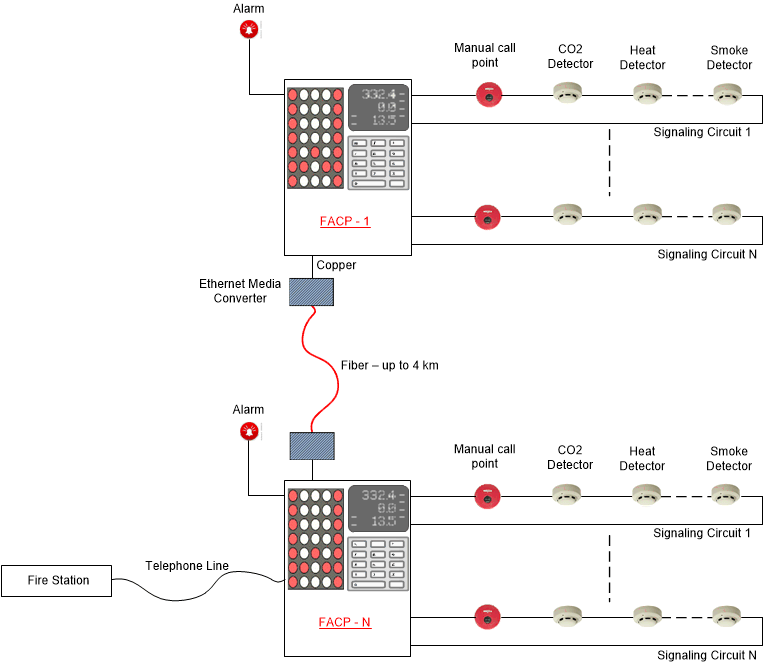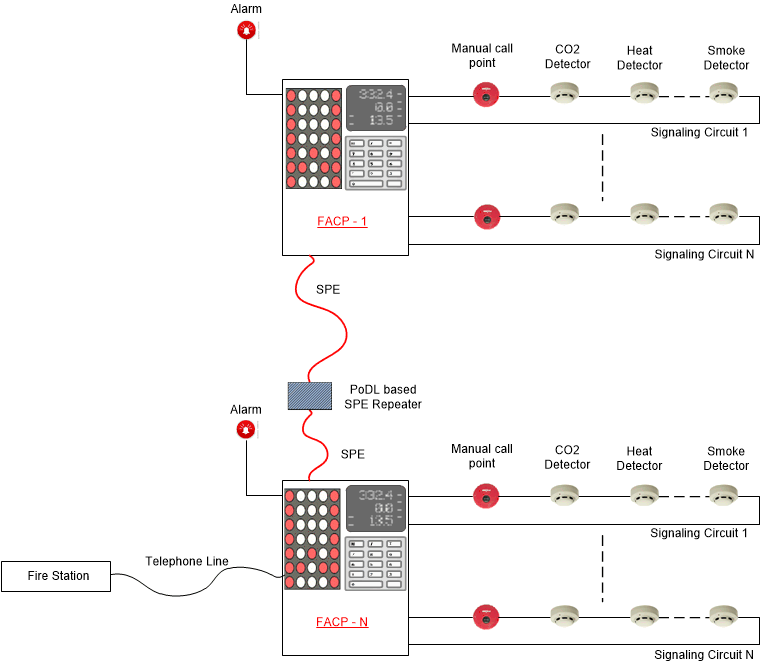SNLA360 October 2020 DP83TD510E
Fire Safety Applications
Fire alarm control panels (FACPs) connect to various heat, smoke and gas detectors. These sensors, connected together in the signaling loop, generate an alarm in case of accidents and FACPs may communicate to fire stations through a telephone network. An FACP often supports multiple signal loops in order to facilitate splitting into various zones or floors for easy identification.
Each building can have multiple FACPs, depending on the number of floors and sensors. When a facility like a large residential complex, office, school or shopping mall expands, there is often a need to interconnect FACPs across buildings as far as 3 to 4 km apart through Ethernet, using either copper or fiber wires. Ethernet based on 100BASE-TX/10BASE-T) require multiple repeaters to bridge these distances, in which case powering them can be a challenge. Another option is to transition to fiber cables, which require media converters (copper to fiber) at both ends. Traditional Architecture – Fiber Connectivity Between FACPs depicts an example system.
 Traditional Architecture – Fiber Connectivity Between FACPs.
Traditional Architecture – Fiber Connectivity Between FACPs. Both of the previously-described options result in expensive systems. SPE can solve both challenges for distances up to 1 km; and for systems with greater distances, you can use repeaters powered through PoDL. PoDL eliminates the need of external power supply, further simplifying the system. Architecture Using SPE Between FACPs depicts a fire safety system using SPE.
 Architecture Using SPE Between FACPs.
Architecture Using SPE Between FACPs.